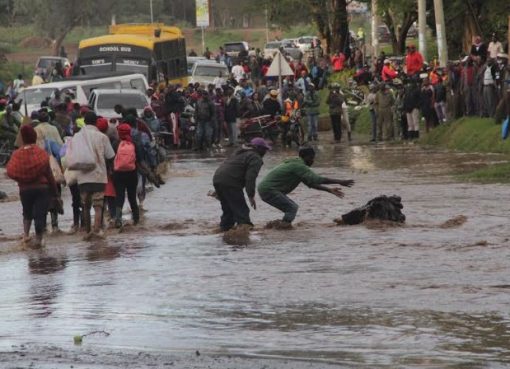Nakuru County is investing in early disaster warning systems, including advanced weather forecasting, risk modelling, and community-centred risk communication approaches, in a move aimed at enhancing disaster preparedness and management.
Nakuru City Manager Mr. Gitau Thabanja said despite the increasing frequency and intensity of extreme weather events, many Kenyan communities remained ill-equipped to cope with disasters mainly because there were limited or no early warning systems among many communities and those available were often unreliable.
The manager acknowledged that the county was vulnerable to natural calamities, citing the recent Mai Mahiu flood disaster, adding that the new campaign aimed at helping communities mitigate against disasters such as floods, landslides, droughts, fires, and earthquakes, among others.
Thabanja argued that the country needed to shift its focus from reactive responses to more proactive measures to disaster management by embracing anticipatory action approaches to risks and disasters in order to effectively mitigate the impact of future catastrophes.
“Lack of mitigations has resulted to a vicious cycle that perpetuates poverty and vulnerability, particularly among marginalised communities who often live in disaster-prone areas,” said Thabanja.
The city manager outlined Nakuru city’s challenges as rampant urbanisation, poor urban planning, inadequate infrastructure, and the increasing frequency of extreme weather events precipitated by climate change.
To mitigate these risks, Thabanja explained that the County was focusing on several key areas, including a detailed geological survey of the city and capacity building for the city’s technical team through training and knowledge transfer.
He further added that civic education and community engagement initiatives would be implemented to raise awareness about disaster preparedness as well as the development of a comprehensive storm water master plan.
Part of the approach, the manager said, was to empower the community to have ample time to evacuate or take protective measures, adding this would save countless lives and reduce economic losses.
The strategy, he noted, would also include developing and regularly rehearsing emergency response plans, ensuring that evacuation routes were well-maintained and accessible, in addition to implementing social and behaviour change programmes to help people modify their beliefs, attitudes and adopt new ways of perceiving risks.
He assured that the County Government was setting up a climate change response initiative framework, a comprehensive action plan, and resource mobilisation, adding that establishing community-driven data and knowledge systems linked to higher-level policy spaces was necessary to inform context-specific and adaptive responses to disasters.
By Esther Mwangi





